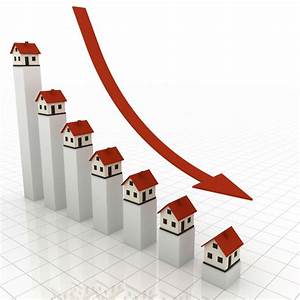-
 Navigating the Shifting Landscape of Commercial Lending Explore the evolving trends in commercial lending, including the integration of technology, impacts of interest rate changes, and the rise of ESG considerations.
Navigating the Shifting Landscape of Commercial Lending Explore the evolving trends in commercial lending, including the integration of technology, impacts of interest rate changes, and the rise of ESG considerations.
California Posts Largest Housing Sales Decline Since 2014
- Tuesday, 23 October 2018
- Originating

The California housing market posted its largest year-over-year sales decline since March 2014 and remained below the 400,000-level sales benchmark for the second consecutive month in September. That’s an indication that the market is slowing as many potential buyers put their homeownership plans on hold, according to the California Association of Realtors.
Closed escrow sales of existing, single-family detached homes in California totaled a seasonally adjusted annualized rate of 382,550 units in September, according to information collected by the Association from more than 90 local realtor associations and multiple listing services across the state.
The statewide annualized sales figure represents what would be the total number of homes sold during 2018 if sales maintained the September pace throughout the year. It is adjusted to account for seasonal factors that typically influence home sales.
September's sales figure was down 4.3 percent from the revised 399,600 level in August and down 12.4 percent compared with home sales in September 2017 of 436,920.
"The housing market continued to deteriorate and the decline in sales worsened as interest rates remained on an upward trend. More would-be buyers are self-sidelining as they believe home prices will start to come down soon, making housing more affordable despite rising interest rates," said Steve White, president of the California Association of Realtors. "Tax reform, which increases the cost of homeownership, also is contributing to the decline, especially in high-cost areas such as the San Francisco Bay Area and Orange County."
The statewide median home price dropped to $578,850 in September. The September statewide median price was down 2.9 percent from $596,410 in August but up 4.2 percent from a revised $555,400 in September 2017.
"Price appreciations have slowed in the last few months and inventory has risen considerably since June when the statewide median price hit a new peak," said Leslie Appleton-Young, senior vice president and chief economist for the Association. "Buyers are becoming increasingly concerned about market developments and are reluctant to purchase at the prevailing market price. As such, the deceleration in price growth will likely continue in coming months."
Other key points from the Association’s September 2018 resale housing report include:
- On a regionwide, non-seasonally adjusted basis, the Southern California region led the state's sales decline, falling 17.3 percent from a year ago. Los Angeles County experienced the largest drop in the region at 22 percent, while Orange County declined 21.8 percent. Sales in the Inland Empire were down 10.8 percent from a year ago, with Riverside County was down 9.7 percent and San Bernardino county dropped 12.4 percent.
- Sales in the Bay Area declined 16.4 percent, from September 2017, the largest decline since October 2010. Santa Clara posted the largest drop at 22.6 percent, while Marin experienced the lowest decline at 1.1 percent. Alameda (-10.4 percent), Contra Costa (-17.3 percent), Napa (-14.2 percent), San Francisco (-11.5 percent), San Mateo (-14.6 percent), Solano (-19.3 percent), and Sonoma (-19.4 percent) counties all posted double-digit declines.
- Although Glenn and Kings counties posted annual sales gains of 9.1 percent and 11.1 percent, respectively, sales for the Central Valley Region as a whole were down 15.1 percent from a year ago. Every other county of the region posted declines from a year ago.
- While home prices continue to grow in the Bay Area, the rate of appreciation has slowed since the first half of the year. In September, the median price in the Bay Area increased 9.8 percent from last year, lower than the average year-over-year growth rate of 14.9 percent. Three counties continued to show double-digit growth compared with the previous year: San Mateo (14.2 percent), San Francisco (11.7 percent) and Marin (11.6 percent).
- Sales in Los Angeles and Orange counties both dropped 20 percent in September, which is taking a toll on the price appreciation of each county and the Southern California region as a whole. The Los Angeles Metropolitan Area had the lowest year-over-year growth rate of 3.4 percent in September among all major regions. Individually, Los Angeles County and Orange County had the smallest growth rates of 4.7 percent and 3.3 percent, respectively, among all counties within the region. Riverside and San Diego also had modest growth rates of around 5 percent in September, while Ventura and San Bernardino had more robust price appreciation at 10.6 percent and 7.5 percent, respectively.
- Statewide active listings rose for the sixth consecutive month following 33 straight months of declines, increasing 20.4 percent from the previous year. September's listings increase was the biggest in almost four years.
- At the regional level, the San Francisco Bay Area increased the most in active listings, with a surge of 44 percent year over year. The increase was most obvious in Santa Clara, as the county's active listings more than doubled (+113 percent) from last September. The Southern California region increased 23 percent and the Central Valley rose 13 percent in active listings, on a year-over-year basis.
- The Unsold Inventory Index, which is a ratio of inventory over sales, rose again in September from 3.3 months in September 2017 to 4.2 months in September 2018. The index measures the number of months it would take to sell the supply of homes on the market at the current sales rate.
- The median number of days it took to sell a California single-family home ticked up from 20 days in September 2017 to 23 days in September 2018, a sign that market competitiveness is not as heated as in 2017.
- The Association's statewide sales price-to-list price ratio hit the lowest level in 20 months but was down from a year ago at 98.5 percent in September 2018 compared with 99.1 percent in September 2017. The decline indicates that buyers may have more negotiation power in the current market than a year ago.
- The average statewide price per square foot for an existing, single-family home statewide was $282 in September, up from $270 in September 2017, but dipped slightly from $283 in August 2018.
- The 30-year, fixed-mortgage interest rates averaged 4.63 percent in September, up from 3.81 percent in September 2017, according to Freddie Mac. The five-year, adjustable mortgage interest rate also increased in September to an average of 3.94 percent from 3.16 percent from September 2017
The California housing market posted its largest year-over-year sales decline since March 2014 and remained below the 400,000-level sales benchmark for the second consecutive month in September. That’s an indication that the market is slowing as many potential buyers put their homeownership plans on hold, according to the California Association of Realtors.
Closed escrow sales of existing, single-family detached homes in California totaled a seasonally adjusted annualized rate of 382,550 units in September, according to information collected by the Association from more than 90 local realtor associations and multiple listing services across the state.
The statewide annualized sales figure represents what would be the total number of homes sold during 2018 if sales maintained the September pace throughout the year. It is adjusted to account for seasonal factors that typically influence home sales.
September's sales figure was down 4.3 percent from the revised 399,600 level in August and down 12.4 percent compared with home sales in September 2017 of 436,920.
"The housing market continued to deteriorate and the decline in sales worsened as interest rates remained on an upward trend. More would-be buyers are self-sidelining as they believe home prices will start to come down soon, making housing more affordable despite rising interest rates," said Steve White, president of the California Association of Realtors. "Tax reform, which increases the cost of homeownership, also is contributing to the decline, especially in high-cost areas such as the San Francisco Bay Area and Orange County."
The statewide median home price dropped to $578,850 in September. The September statewide median price was down 2.9 percent from $596,410 in August but up 4.2 percent from a revised $555,400 in September 2017.
"Price appreciations have slowed in the last few months and inventory has risen considerably since June when the statewide median price hit a new peak," said Leslie Appleton-Young, senior vice president and chief economist for the Association. "Buyers are becoming increasingly concerned about market developments and are reluctant to purchase at the prevailing market price. As such, the deceleration in price growth will likely continue in coming months."
Other key points from the Association’s September 2018 resale housing report include:
- On a regionwide, non-seasonally adjusted basis, the Southern California region led the state's sales decline, falling 17.3 percent from a year ago. Los Angeles County experienced the largest drop in the region at 22 percent, while Orange County declined 21.8 percent. Sales in the Inland Empire were down 10.8 percent from a year ago, with Riverside County was down 9.7 percent and San Bernardino county dropped 12.4 percent.
- Sales in the Bay Area declined 16.4 percent, from September 2017, the largest decline since October 2010. Santa Clara posted the largest drop at 22.6 percent, while Marin experienced the lowest decline at 1.1 percent. Alameda (-10.4 percent), Contra Costa (-17.3 percent), Napa (-14.2 percent), San Francisco (-11.5 percent), San Mateo (-14.6 percent), Solano (-19.3 percent), and Sonoma (-19.4 percent) counties all posted double-digit declines.
- Although Glenn and Kings counties posted annual sales gains of 9.1 percent and 11.1 percent, respectively, sales for the Central Valley Region as a whole were down 15.1 percent from a year ago. Every other county of the region posted declines from a year ago.
- While home prices continue to grow in the Bay Area, the rate of appreciation has slowed since the first half of the year. In September, the median price in the Bay Area increased 9.8 percent from last year, lower than the average year-over-year growth rate of 14.9 percent. Three counties continued to show double-digit growth compared with the previous year: San Mateo (14.2 percent), San Francisco (11.7 percent) and Marin (11.6 percent).
- Sales in Los Angeles and Orange counties both dropped 20 percent in September, which is taking a toll on the price appreciation of each county and the Southern California region as a whole. The Los Angeles Metropolitan Area had the lowest year-over-year growth rate of 3.4 percent in September among all major regions. Individually, Los Angeles County and Orange County had the smallest growth rates of 4.7 percent and 3.3 percent, respectively, among all counties within the region. Riverside and San Diego also had modest growth rates of around 5 percent in September, while Ventura and San Bernardino had more robust price appreciation at 10.6 percent and 7.5 percent, respectively.
- Statewide active listings rose for the sixth consecutive month following 33 straight months of declines, increasing 20.4 percent from the previous year. September's listings increase was the biggest in almost four years.
- At the regional level, the San Francisco Bay Area increased the most in active listings, with a surge of 44 percent year over year. The increase was most obvious in Santa Clara, as the county's active listings more than doubled (+113 percent) from last September. The Southern California region increased 23 percent and the Central Valley rose 13 percent in active listings, on a year-over-year basis.
- The Unsold Inventory Index, which is a ratio of inventory over sales, rose again in September from 3.3 months in September 2017 to 4.2 months in September 2018. The index measures the number of months it would take to sell the supply of homes on the market at the current sales rate.
- The median number of days it took to sell a California single-family home ticked up from 20 days in September 2017 to 23 days in September 2018, a sign that market competitiveness is not as heated as in 2017.
- The Association's statewide sales price-to-list price ratio hit the lowest level in 20 months but was down from a year ago at 98.5 percent in September 2018 compared with 99.1 percent in September 2017. The decline indicates that buyers may have more negotiation power in the current market than a year ago.
- The average statewide price per square foot for an existing, single-family home statewide was $282 in September, up from $270 in September 2017, but dipped slightly from $283 in August 2018.
- The 30-year, fixed-mortgage interest rates averaged 4.63 percent in September, up from 3.81 percent in September 2017, according to Freddie Mac. The five-year, adjustable mortgage interest rate also increased in September to an average of 3.94 percent from 3.16 percent from September 2017
CIT Was Lead Underwriter for $24M Multi-Family Loan
The CIT Group Inc.’s real estate division was the lead arranger of a $24 million senior secured loan for the acquisition of a multi-family property in San Pedro, Calif., by MWest Holdings, a private real estate investment and management firm.
MWest Holdings acquired the San Pedro Bank Lofts, an 89-unit loft-style multi-family property located in downtown San Pedro, near the San Pedro Arts District, in August. The property consists of two four-story buildings.
"The convenient location of this property, and its proximity to the arts district and redeveloping Los Angeles waterfront, makes it an attractive investment," said Matthew Ellis, chief investment officer at MWest Holdings. "We appreciated CIT's real estate expertise, which helped enable a smooth and successful transaction."
"CIT is active in financing commercial properties in the Southern California region," said Bryan Cavalier, managing director and West Coast head of CIT's real estate finance division. "We were pleased to leverage our expertise to assist MWest Holdings in completing this purchase."
CIT's real estate division originates and underwrites senior secured real estate transactions. With deep market expertise, underwriting experience and industry relationships, the unit provides financing for single properties, property portfolios and loan portfolios.
Read more...
Total Expert Raises $20M in Venture Capital
- Friday, 12 October 2018
- Originating

Total Expert, a creator of digital marketing and communication software, has raised $20 million in venture capital.
The round, a Series B Funding, was led by Emergence Capital with participation from Rally Ventures and Arthur Ventures, bringing the total funding for the company to $34 million.
“People expect digital simplicity and real human relationships, and financial services companies too often lose these relationships when they don’t engage with personalized, automated communication as people go from awareness to lead to transaction,” said Joe Welu founder and chief executive officer at Total Expert. “We solve this using data to drive each customer’s journey toward a relevant transaction, then manage each customer relationship for life.”
Total Expert is a creator of digital marketing and communication software, whose clients include U.S. Bank, Loan Depot and Guaranteed Rate, and eight of the top 15 lenders.
“Their team of engineers, data scientists, designers and financial services veterans puts them in a rare position to modernize how financial institutions acquire, manage and grow customer relationships,” said Joseph Floyd, partner at Emergence Capital.
Read more...
Fannie’s Index Shows More Americans Believe It's a Bad Time to Buy a Home
- Sunday, 06 January 2019
- Uncategorized

The Fannie Mae Home Purchase Sentiment Index decreased in December, falling 2.7 points to 83.5, resuming its recent downward trend after November's slight uptick.
The decrease can be attributed primarily to a 12-percentage point decrease in the net share of Americans who said it is a good time to buy a home. The net share of Americans who said it is a good time to sell a home increased 1 percentage point.
Respondents reporting significantly higher income over the past 12 months fell 5 percentage points on net, erasing last month's gains, while the net share expressing greater job confidence increased 2 percentage points. Finally, the net share of respondents who expect home prices to go up fell 2 percentage points, and the net share who expect mortgage rates to go down remained unchanged.
"Consumer attitudes regarding whether it's a good time to buy a home worsened significantly in the last month, as well as from a year ago, to a survey low," said Doug Duncan, senior vice president and chief economist at Fannie Mae. "Although home price growth slowed in 2018, the cumulative impact of sustained, robust increases in home prices outpacing income growth likely helped drive the share of consumers citing high home prices as a primary reason for a bad time to buy a home to a survey high.
HOME PURCHASE SENTIMENT INDEX COMPONENT HIGHLIGHTS
Fannie Mae's 2018 Home Purchase Sentiment Index decreased in December by 2.7 points to 83.5. The HPSI is down 2.3 points compared with the same time last year. Additional highlights from the survey are as follows:
- The net share of Americans who say it is a good time to buy a home fell 12 percentage points from last month to 11%. This component is down 13 percentage points from the same time last year.
- The net share of those who say it is a good time to sell a home rose 1 percentage point to 36%. This component is up 2 percentage points from the same time last year.
- The net share of those who say home prices will go up fell 2 percentage points to 31%, declining for the third consecutive month. This component is down 13 percentage points from the same time last year.
- The net share of Americans who say mortgage rates will go down over the next 12 months remained unchanged at -56%. This component is down 4 percentage points from the same time last year.
- The net share of Americans who say they are not concerned about losing their job increased 2 percentage points to 79%. This component is up 11 percentage points from the same time last year.
- The net share of those who say their household income is significantly higher than it was 12 months ago fell 5 percentage points to 19%. This component is up 3 percentage points from the same time last year.
“Meanwhile, consumers' views on the direction of the economy, a key support for housing market sentiment of late, has softened somewhat from its October high,” said Duncan. “Looking ahead, consumers expect the pace of home price growth to slow over the course of 2019, which may temper growing concern over housing affordability." The Home Purchase Sentiment Index distills information about consumers' home purchase sentiment from Fannie's National Housing Survey into a single number.
Read more...









